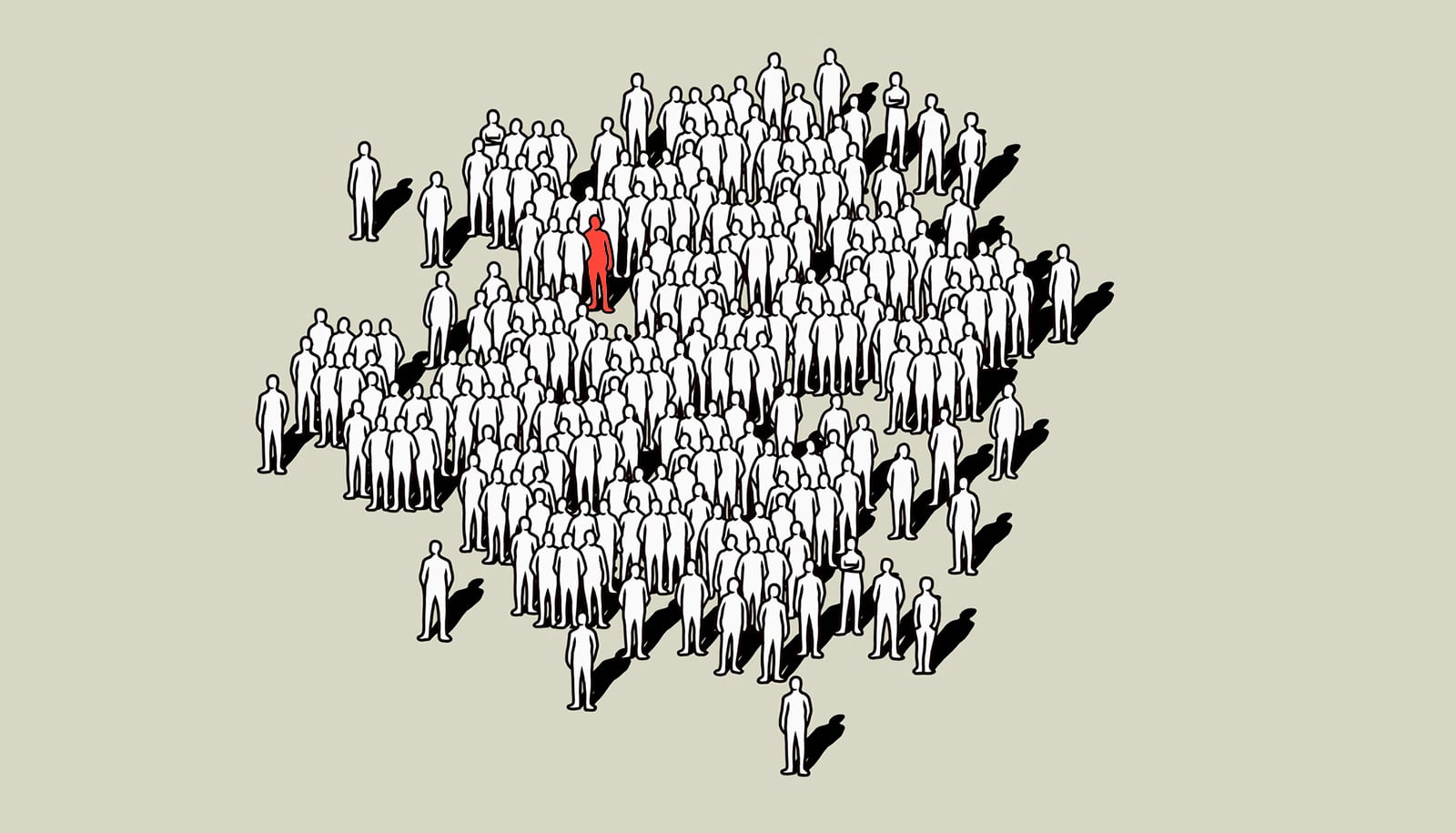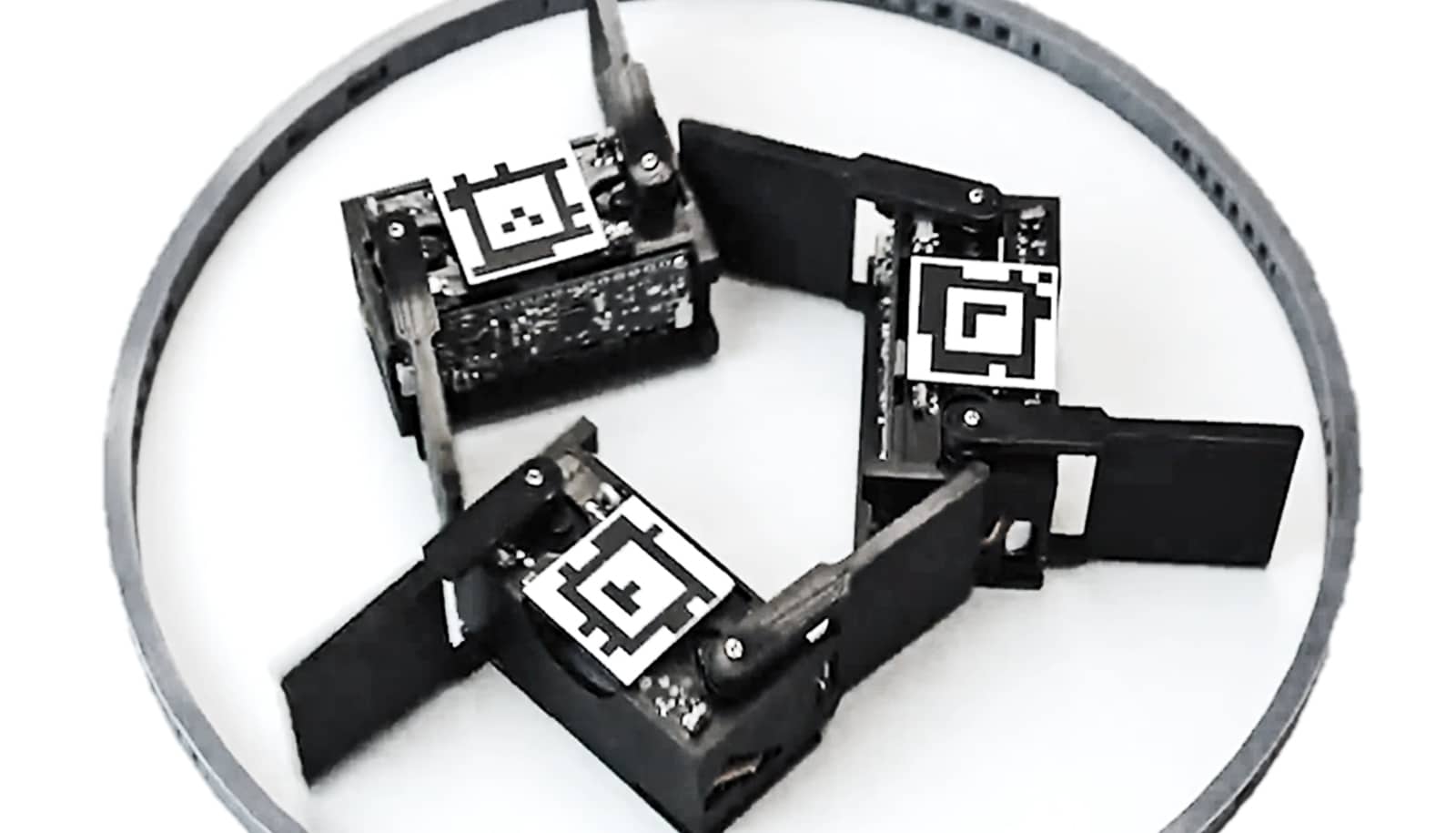A new model of human crowd behavior takes the point of view of an individual crowd member, and is remarkably accurate at predicting actual crowd flow, its developers say.
Like flocks of birds or schools of fish, crowds of humans also tend to move en masse—almost as if they’re thinking as one. Scientists have proposed different theories to explain this type of collective pedestrian behavior.
The new model, described in a paper in the Proceedings of the Royal Society B, illustrates the role of visual perception in crowd movement. It shows how crowd members who are visible from a participant’s viewpoint determine how that participant follows the crowd and what path they take.
That approach is a departure from previous models, which operate from the point of view of an “omniscient observer,” says study author William H. Warren, a professor of cognitive, linguistic, and psychological sciences at Brown University. In other words, prior studies analyzed the movement of the crowd from the perspective of someone observing the crowd from a distance.
“Most omniscient models were based on physics—on forces of attraction and repulsion—and didn’t fully explain why humans in a group interact in the way that they do,” Warren says.
In a series of experiments led by members of Warren’s lab, which involved tracking the movements of people wearing virtual reality headsets, researchers could predict an individual’s movement based on their view of a virtual crowd.
“We are the first group to provide a sensory basis for this type of coordinated movement,” Warren says. “The model provides a better understanding of what individuals in a crowd are experiencing visually, so we can make better predictions about how an entire group of people will behave.”
Warren says that models on crowd movement have a variety of applications and can be used to inform the design of public spaces, transportation infrastructure and emergency response plans.
In human crowds, as in many other animal groups, “flocking” behavior emerges from interactions between individuals, Warren explains. Understanding these interactions involves identifying rules of engagement that govern how an individual responds to their neighbors in a crowd, and how multiple neighbors are combined.
Virtual crowd behavior
To produce a realistic individual trajectory of movement, the team conducted experiments through Warren’s Virtual Environment Navigation Lab (VENLab). Study participants in a large open room wore virtual reality headsets that showed animated 3D virtual humans who were manipulated to move in different ways—for example, some people within the virtual crowd might turn in one direction, while others continued as a group. The participants were instructed to walk with the crowd, while researchers tracked their movements and their path.
The researchers knew from their previous work on pairs of pedestrians that a follower tends to match the walking direction and speed of a leader. From their new experiments, they found that each pedestrian controls their walking direction and speed by using two visual motions. First, they walk in a way that reduces the sideways motion of neighbors in the field of view. At the same time, they walk to reduce the expansion and contraction in the field of view, which happens when a neighbor gets closer or farther away. By using these two variables to control walking, they end up matching the average direction and speed of the crowd.
They also found that pedestrian participants responded less to virtual humans that were farther away, as might be expected, but that was driven by two visual factors, Warren says: the law of optics (things that are farther away in space have smaller visual motions) and the principle of occlusion (neighbors who are farther away are likely to be partially blocked by nearer neighbors, making them harder to see—and harder to follow).
Previous models had taken into account the effect of distance on crowd behavior, but not from a visual perspective. “We found that responses decrease with distance for two reasons that weren’t previously fully understood or appreciated,” Warren says, “and they both have to do with who the people in the crowd can see.”
When the researchers used the experiment results to create a new theory of collective motion, it successfully predicted individual trajectories in both virtual crowd experiments and real crowd data.
Warren explains that people in a group use visual information to guide their own walking—to turn left or right, or speed up or slow down to avoid collisions. The way they use that information to control their movements is referred to as the visual coupling, he says. The other individuals in the group are also behaving according to the same principles.
Social media, too
Warren adds that the findings from case studies like this could be extrapolated to other situations in which people or animals unconsciously coordinate their behavior—such as on social media.
Instead of being visually coupled as in a crowd in a public space, people in social networks are electronically coupled through the internet. In both situations, there is the same strong tendency for a person to imitate others around them and follow those who are moving in a similar direction (ideologically as well as physically). But, as Warren and graduate student Trent Wirth found in other experiments, when one group starts to diverge too much from a person’s current “direction,” the person will reject that group and follow another group moving in a less divergent direction.
“The visual network among people in a crowd isn’t that dissimilar from a social network on social media, in terms of how people are interacting,” he says. “You see analogous kinds of consensus and polarization.”
Warren says that future studies from his lab will continue to explore crowd networks and collective decision-making, especially how groups decide to split or bifurcate to take different paths in physical space or in an online social network.
“There are all sorts of decisions being made at the individual level, but also collectively in groups,” Warren says. “Our new study is just one case study of this self-organized collective behavior.”
The paper is based on an idea developed by Gregory Dachner, who earned his PhD at Brown in 2020, and is a study coauthor.
This research had support from the National Institutes of Health and the National Science Foundation.
Source: Brown University



